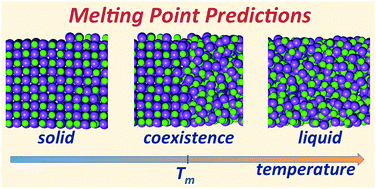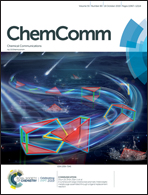Systematically improved melting point prediction: a detailed physical simulation model is required†
Abstract
Accurate prediction of fundamental properties such as melting points using direct physical simulation is challenging. Here, we investigate the melting point (Tm) of alkali halides that are often considered to be the simplest category of salts. Popular force fields that have been examined for this task leave considerable room for improvement. Recently we introduced a new force field for alkali halides (WBK) as part of the Alexandria project, featuring explicit polarisation and distributed charges. This new force field significantly improves the prediction of a large set of physicochemical properties and in this contribution we show that the same is valid for the prediction of Tm. For reference, we calculated Tm using a non-polarisable force field by Joung and Cheatham (JC), and compare our results to existing literature data on the widely used Tosi–Fumi (TF) parameters. In contrast to the predictions of the WBK model, the JC force field consistently overestimates the experimental Tm, while the accuracy of the TF model strongly depends on the investigated salt. Our results show that the inclusion of more realistic physics into a force field opens up the possibility to accurately describe many physicochemical properties over a large range of temperatures, even including phase transitions.



 Please wait while we load your content...
Please wait while we load your content...